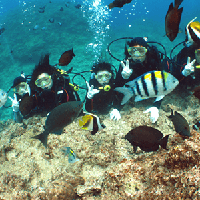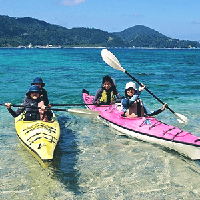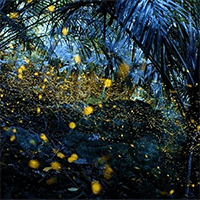List of Ou Island
We will introduce the ever popular facility that can handmade experience in Kansai. First My Cup Noodle Factory Speaking of Osaka Prefecture. Workshop and that can be handmade the "Chicken Ramen", there is a workshop to put a favorite Guzai and soup in a cup that you design yourself make a single cup noodles in the world. In the cup noodle package museum shop or have been exhibited in the world it is also sold souvenirs of regional products. My Cup Noodle Factory has been held at any time without prior reservation, it is nice to be able to enjoy willingly production time is also 30 to 60 minutes. Please try to be confirmed the details in the website by all means. Next is the popular Kyoto confectionery manufacturing in Kyoto Prefecture. In Kyoto city there is a lot of sweets shop. Sweets making, such as the human mouth jelly is Once all means come to Kyoto tourist Among them that I would like to challenge called "Tama Toba" of the "Kameya Yocho head office". But please try to experience When you come to Kyoto because they are held almost every day as long as there is a reservation. In other also visited the Kiyomizu actually Museum petting course and Kyoto traditional industries to experience the pottery There is also a craft classroom to experience the work of Kyoto of traditional crafts in the Yuzen. Since we are also held a variety of events and exhibitions of the contents in line with the Kyoto culture, why not try to feel the delicate sensibility and craftsmanship of artisans.
- Age 6~Age 100
- 3~4 hours
- 09:00 / 14:00
"Ko-Iga" is the highest peak of pottery in history, known as "exceptional beauty" in the world of tea ceremony, mainly during the Sengoku period, when Sen no Rikyu, Oda Nobunaga, and Toyotomi Hideyoshi were active, and the Azuchi-Momoyama period. Experience Awaji Iga making, a reproduction of the Ko-Iga making used in tea ceremony at that time, with one-on-one guidance from a craftsman who hand-made the largest six-tiered climbing kiln in Japan. Ko-Iga is fired at the world's highest firing temperature of 1400℃ for several days, which is unparalleled in the world, so the shape is distorted and sometimes it breaks when firewood is repeatedly hit against it, but the absolute presence and scenery that surpasses this are known as exceptional beauty. (*250℃-450℃ in a bonfire, 1500℃ in a blast furnace) Awaji Iga aims to revive Ko-Iga and values the invisible process and value, so it does not use modern tools such as burners and thermometers, or glazes that glassify the surface. During the Sengoku period, wars were taking place all over Japan, but no one really wanted war, and tea ceremonies served as a place for secret talks to avoid war. It is said that Ko-Iga was used as a special tool to hold a special tea ceremony, which could avoid war if successful, or lead to war if unsuccessful. At Tsurugi Kiln, you can experience the revival of Ko-Iga, which was used in tea ceremonies that determined history and people's lives and deaths, and the making of Awaji Iga pottery. *The actual experience is limited to the forming process. During the four days and nights of the kiln firing in February, you can visit the impressive site at any time. Please visit Awaji Island three times to enjoy the forming process, the kiln firing in February, and the collection after April. ■Itinerary 1. Decide what to make 2. Knead the clay 3. Shape, make strings, hand-form, and make balls *The actual experience is limited to the forming process. During the kiln firing in February, you can see the items you made yourself. *As the items are fired once a year during the kiln firing in February, they will be handed over after spring.
- Age 10~Age 100
- Within 1 hour
You can experience making incense sticks by choosing the scent and shape using rare sandalwood. After molding, dry it at home and light it or enjoy it as a room fragrance. The northern part of Awaji Island, where Parche Fragrance House is located, is known as a town of fragrance because of the concentration of incense manufacturers. You can experience making incense sticks using the rare sandalwood that is unique to the town of fragrance. It is a time to learn about the ingredients of incense, experience the manufacturing process, and learn about incense. Take it home, dry it, light it, and enjoy it as a room fragrance! The experience schedule is as follows. ● Meeting place / reception Fragrance House (please come to the photo) ● Incense making experience (50 minutes) ① Explanation of the experience ② Choose one of four types of fragrance. ③ Put the ingredients in a mortar and knead it with a pestle until it becomes clay-like. ④ Use a stick to stretch it to a uniform thickness. ⑤ Cut it into your desired shape. ⑥Arrange the removed incense sticks on the cardboard, stack the cardboard boxes, secure them with rubber bands, and put them in a bag to take home. ⑥Finished! Once you get home, let the incense dry (for about 2-3 days).
- Age 5~Age 100
- Within 1 hour
- 11:00
Approximately 70% of domestic incense sticks are manufactured on Awaji Island. Among them, the Ei district is where many manufacturers gather, and you can smell the delicious aroma of incense as you walk through the town. It has even been selected as one of the "100 Scented Landscapes" by the Ministry of the Environment. This is a valuable experience where you can visit an incense manufacturer that has been manufacturing incense since 1905 and still maintains traditional handmade manufacturing methods, learn about the history of Awaji Island incense sticks, knowledge of fragrance, and the manufacturing process from a fragrance master called a "Koshi", and experience part of the manufacturing process while receiving a lecture from a veteran craftsman. After learning the basics of incense from a fragrance master called a "Koshi" at an incense manufacturer on Awaji Island, which accounts for approximately 70% of the domestic incense market, you will receive a lecture from a veteran craftsman and experience part of the actual manufacturing process. It is a valuable opportunity to listen to the craftsman's story! *The experience will involve cutting the sticks into bonkiri (a bonkiri stick) and putting them raw on the sticks.
- Age 5~Age 100
- 1~2 hours
- 11:00
Approximately 70% of domestic incense sticks are produced on Awaji Island. Among them, the Ei district is where many manufacturers gather, and you can smell the delicious aroma of incense as you walk through the town. It has even been selected as one of the "100 Scented Landscapes" by the Ministry of the Environment. Visit an incense manufacturer that has been producing incense since 1905 and continues to produce it by hand, learning about the history of Awaji Island incense sticks, knowledge of fragrance, and the manufacturing process from a fragrance master called a "Koshi", and experiencing making your own original incense. After learning the basics of incense by visiting a manufacturer of incense sticks on Awaji Island, which accounts for approximately 70% of domestic incense sticks, and learning about the history and knowledge of fragrance of Awaji Island incense sticks, as well as the traditional manufacturing process, it's time to make your own incense! Choose the color of the incense, put the ingredients and water in a mortar and knead. Blend your favorite fragrances and knead again, then use a die to shape the incense. Take it home and let it dry thoroughly for about a week, and your incense is ready! You can experience making your own scent at home. [Experience Schedule] 11:00 Meeting Observe the traditional incense manufacturing process at Awaji Umekundo Ei Factory (30 minutes) 11:30 Learn about the history of incense and fragrance knowledge from a Kohshi (producer) and experience making incense (80 minutes) 12:50 Scheduled to end
- Age 5~Age 100
- 1~2 hours
- 11:00
Approximately 70% of domestic incense sticks are produced on Awaji Island. Among them, the Ei district is where many manufacturers gather, and you can smell the delicious aroma of incense as you walk through the town. It has even been selected as one of the "100 Scented Landscapes" by the Ministry of the Environment. Visit an incense manufacturer that has been producing incense since 1905 and continues to produce it the traditional way, learning about the history of Awaji Island incense sticks, knowledge of fragrance, and the manufacturing process from a fragrance master called a "Koshi", and experiencing making your own original sachet. After learning the basics of incense by visiting an incense manufacturer on Awaji Island, which accounts for approximately 70% of the domestic incense market, and learning about the history of Awaji Island incense stick production, knowledge of fragrance, and the traditional manufacturing process, you can finally experience making an incense sachet. You can mix your favorite fragrance ingredients and make an original sachet to put in your favorite sachet, and enjoy the scent at home. [Experience Schedule] 11:00 Meeting point Observe the traditional incense manufacturing process at Awaji Baikondo Ei Factory 11:30 Learn about the history and scents of incense from a Kohshi (producer) and experience making a scented sachet (50 minutes) 12:20 Scheduled end
- Age 13~Age 100
- 3~4 hours
- 10:00
With a history of 1400 years, tiles have protected Japanese houses, including shrines and temples. Among them, there are "Onishi" who have the skills of a master craftsman who draws a blueprint in his head while looking at the drawing with his own eyes without using blueprints or molds, and finishes it only with the sense of his fingertips and a handmade spatula. You can make a one-of-a-kind oni tile by learning from an "Onishi" how to make oni tile by hand using "name-do" soil that is more than 2 million years old. Awaji Island is one of the three major production areas of tiles in Japan, and is the number one producer of smoked tiles that shine with "silver". Tiles have a history of more than 1400 years, and tile making has been going on in Awaji Island for more than 400 years. Moreover, the soil used for Awaji tiles is still more than 2 million years old, and the very fine particles of "name-do" are used to create smoked tiles that shine with a beautiful silver color by baking (smoking) them in a kiln. In Japan, onigawara tiles have been used to decorate roofs as a talisman since ancient times. Even today, these onigawara tiles are carefully handcrafted by oni-shi (demon craftsmen) without the use of machines. Normally, you don't get to see onigawara tiles being made, but in this experience, you can watch the onigawara craftsmen's skills up close and make onigawara tiles together. Since this experience is limited to one group, you can make onigawara tiles without worrying about other people. If you have any questions or questions about how to make them, you can ask the onigawara maker at any time, and it is an experience where you can experience traditional techniques in a private atmosphere. [Procedure] 1. Draw a rough sketch of the image (you can also bring a draft with you) 2. Decide on the design of the onigawara tile 3. Together with the onigawara maker, use tile clay (nametsu) to create a rough shape 4. Let it cure (eat lunch (each person) during this time) 5. Finish the fine details using a spatula and your fingertips 6. Completed (you can also take a commemorative photo with the onigawara maker) *The work will then be carefully dried and fired and delivered in about two months. *For lunch, you can enjoy Awaji Island's specialty "Kawara-yaki" at the facility (additional charge required).
最近チェックしたプラン
Please wait a moment
![[Hyogo, Minami Awaji] Experience making "Awaji Iga", a reproduction of "Ko-Iga", the highest peak of pottery in history, which was known as "exceptional beauty" in the world of tea ceremony mainly during the Sengoku period!の画像](https://img.activityjapan.com/10/58639/10000005863901_1Gz5AIDf_3.webp?version=1744257065)
![[Hyogo/Awaji] No.1 share of domestic incense! Experience making incense while learning about ingredients and manufacturing processes at the incense town theme park. Make your own scent and shape to suit your taste.の画像](https://img.activityjapan.com/10/58590/10000005859001_1Gz5AIDf_3.webp?version=1744001282)
![[Awaji, Hyogo] Learn from active craftsmen of a manufacturer that preserves traditional handmade manufacturing, and experience some of the processes involved in making incense, a traditional industry on Awaji Island, in a town of incense that has continued since the Edo period.の画像](https://img.activityjapan.com/10/58861/10000005886101_nXyAW2Zv_3.webp?version=1745205481)
![[Awaji, Hyogo] Learn about the history and basics of fragrance from a fragrance master in this town of incense that has been around since the Edo period, and create your own original incense by choosing the scent and shape.の画像](https://img.activityjapan.com/10/58859/10000005885901_nXyAW2Zv_3.png?version=1745203267)
![[Hyogo/Awaji] Learn all about fragrances and then make your favorite scented sachet at an incense manufacturer that preserves traditional handmade manufacturing.の画像](https://img.activityjapan.com/10/58819/10000005881901_nXyAW2Zv_3.png?version=1744872913)
![[Hyogo, Minami Awaji] Try your hand at making onigawara tiles, a tradition that has continued for over 400 years! Learn from a master craftsman, the oni-shiの画像](https://img.activityjapan.com/10/58778/10000005877801_1Gz5AIDf_3.webp?version=1744699742)







